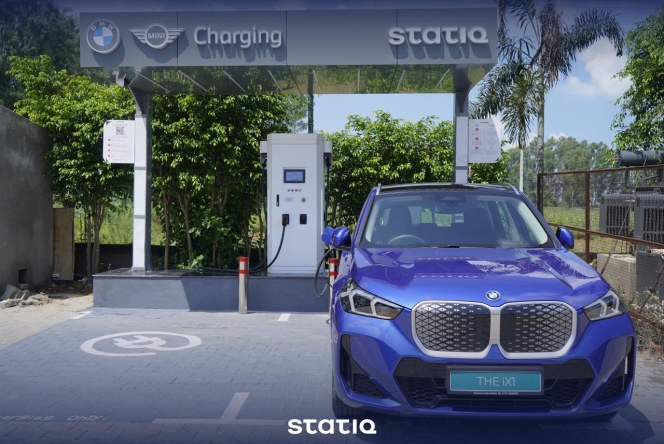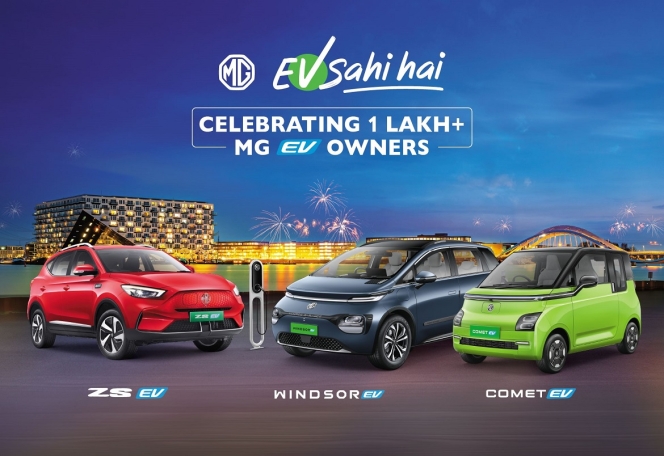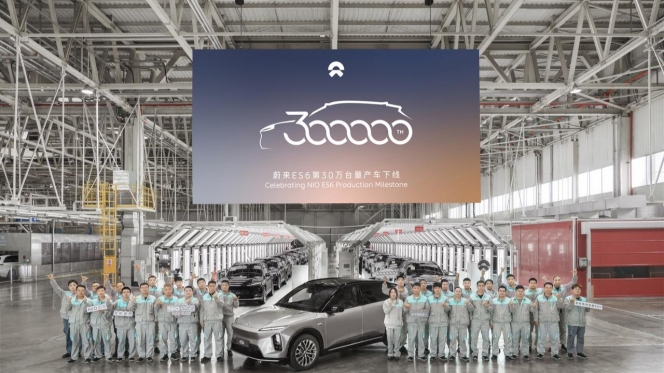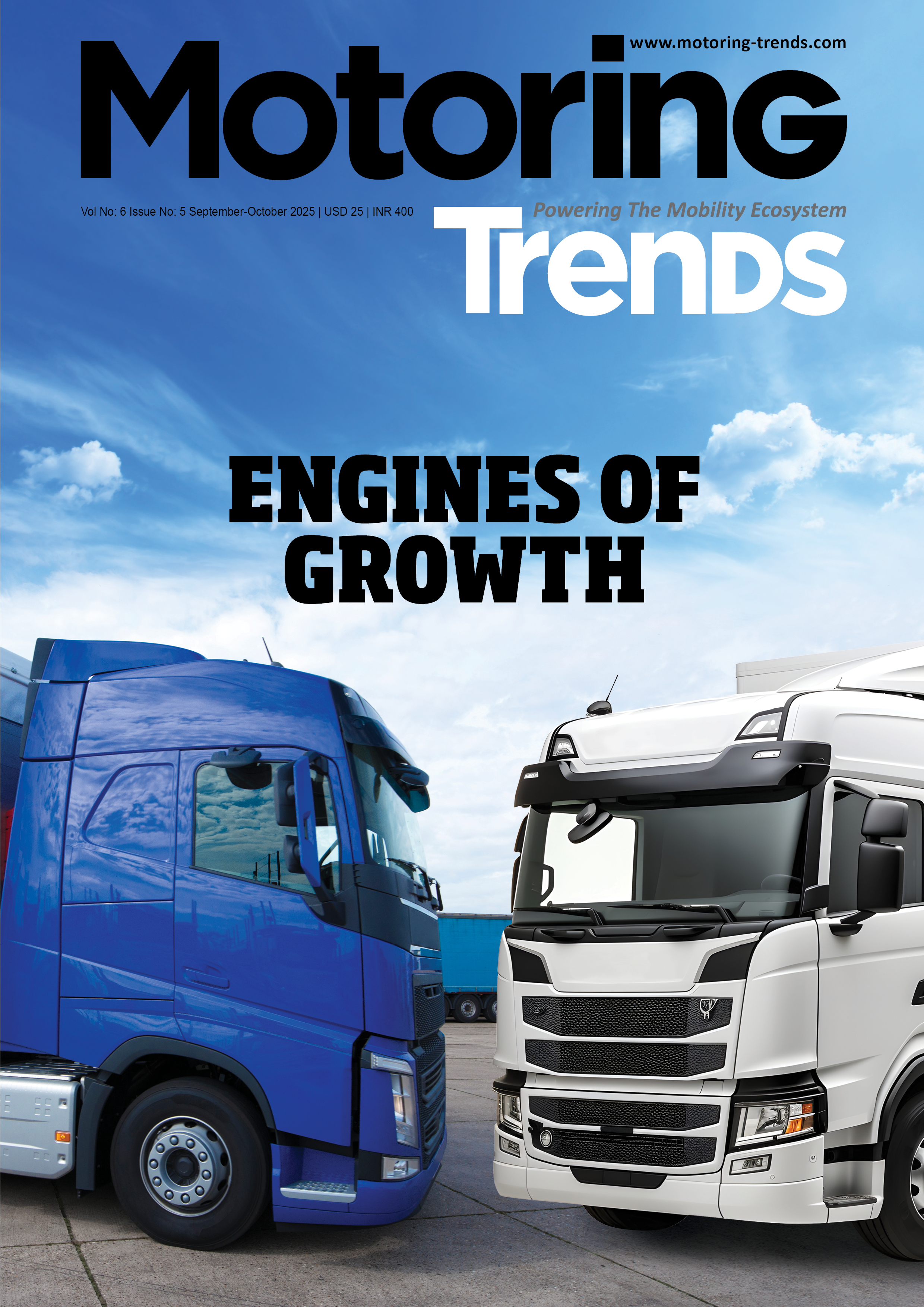- India EV Market
- Electric Two-Wheelers
- Electric Three-Wheelers
- EV Policy & Incentives
- Battery & Charging Infrastructure
- Sustainable Mobility
- EV Export Hub
- EV Industry Leaders
- Clean Energy Transition
- Future of Mobility
EV Market In India At Inflection Point; Growth Imminent Across Categories
- By Gaurav Nandi and Nilesh Wadhwa
- September 09, 2025

EV Market In India At Inflection Point; Growth Imminent Across Categories
The third largest automobile market saw a staggering 2,142,565 units of electric vehicles sold between September 2024 and August 2025, according to data from Vahan Dashboard (excluding Telangana).
The electric vehicle sales in India witnessed mixed sales in August, 2025, according to the same source. Statistics put electric two-wheeler sales at the lead with 104,373 units compared to July’s 103,469 units, followed by four wheelers at 17,387 units from 16,127 units a month earlier and the rest of the pie was goods carriers, buses and three-wheeler cargo carriers.
The dashboard also reported a decline in electric rickshaw sales that dell to 36,962 from 39,782 in July, followed by electric three-wheeler L5 passenger (18,007 from 20,446) and electric carts (6,213 from 6,817).
Nonetheless, the market sentiment about this vehicular segment seems to be strong. Exuding confidence on World EV Day 2025, Deepak Manwani, Head of Operations and Revenue at Yuma Energy, told Motoring Trends, “As India’s automotive sector accelerates towards electrification, the momentum is unmistakable in two- and three-wheelers. What began with fleet use cases is now rapidly entering personal mobility with adoption climbing year-on-year.”
He noted that supportive government policies such as FAME II, the newly launched PM e-DRIVE scheme and state-level EV mandates for EV adoption as well as for charging and swapping infrastructure creation are creating a strong policy tailwind.
There is also an influx of customised financing options for EVs, which is providing further impetus to the two-wheeler and three-wheeler segments. Industry projections indicate that by 2030, nearly 35–40 percent of new two-wheelers and over 50 percent of three-wheelers could be electric with more ambitious scenarios targeting up to 80 percent penetration in these categories.
Sharing the same confidence, Som Kapoor, Partner at EY India, noted, “EVs currently make up about five percent of the market and we’re at an inflection point. Growth is inevitable and the consistent share across different vehicle sizes signals strong policy support from the government. EV adoption will continue to expand as part of the overall auto market.”
He shared that post-pandemic, the Indian automobile market has witnessed stabilised growth at around 3–4 percent, rather than in double digits. With the upcoming GST changes, a boost in small cars and overall volume is expected, especially in the second half of this year.
“In terms of EVs, the two-wheelers segment, which already has a growing momentum, will continue in the path. We expect strong growth in segments where vehicles work on closed routes or where assets are monetised daily, such as three-wheelers and commercial vehicles. These areas will see tremendous adoption,” added Kapoor.
Market command
Despite a modest share in the entire automobile market currently, EVs are expected to gobble at least one-third of the pie. Alluding to this, Manwani noted, “By the end of this decade, we expect electric vehicles to command nearly a third of India’s automotive market with two and three-wheelers at the forefront of this shift. Projections indicate that up to 70–80 percent of new scooters, motorcycles and electric-rickshaws could be electric by 2030, while passenger cars and buses steadily build towards 20–25 percent adoption.”
At the global level, where there are outliers like China and the Nordics leading the EV penetration, India is broadly in line with other major markets and the adoption levels are comparable to its global peers, noted Kapoor.
Furthermore, the torch bearer for EV adoption till the end of the decade is expected to be two-wheelers and three-wheelers. “These are the vehicles that define our cities – scooters weaving through traffic, delivery bikes bringing food to our doors and rickshaws ferrying millions on their daily commutes,” said Manwani.
He added, “They are the lifeblood of urban mobility, and because they run hard and run often, they are also the first to embrace the undeniable economics of going electric. Cars, meanwhile, will follow steadily, starting with city users and early adopters who see EVs as both aspirational and practical for daily city commutes. And then there are our commercial fleets, buses connecting cities, trucks and vans moving goods across states, slowly but surely shifting to electric because the savings are too big to ignore.”
Another boon for the indigenous industry will be collaborations, according to Kapoor. “As Chinese collaboration opens up, we expect to see technology transfers and joint ventures that can accelerate India’s EV ecosystem. These partnerships will be valuable for scaling both manufacturing and innovation,” he contended.
Drawing on the same lines, Omega Seiki Mobility Chairman Uday Narang noted, “Over the past year, India’s EV sector has moved from experimentation to consolidation with stronger players and sustainable models emerging. EV three-wheelers, both passenger and cargo, along with new-age electric trucks, especially in the 1–1.5 tonne category will be the real growth drivers of this market.”
Commenting on current market domination of EVs, Kazam Chief Executive Officer Akshay Shekhar opined, “India's EV narrative is transitioning from initial curiosity to industrial scale. It is not only from the vehicles but also from charging infrastructure and software orchestration. In the next five years, we anticipate chargers to be as pervasive as fuel pumps for three- and two-wheelers with charging equipment closely integrated into fleet operations, home installations and e-commerce logistics.”
Supply and power
Volks Energie Chief Executive Officer Piyush Goyal opined that the world is moving towards largescale adoption of clean mobility and sustainable energy and that companies in India are feeling that effect.
“What started as a symbolic initiative five years ago, has turned into a global movement today as the world collectively and rapidly moves towards large-scale adoption of clean mobility and sustainable energy. This adoption reflects not only a technological change and preference but also a shift in the societal expectations from the automotive and renewable industries overall. Consumers today demand cleaner and more resilient energy systems,” he stated.
Moreover, the Central Government’s ambitious plans to make the country an export hub can well be extended to electric vehicles. Alluding to the strategy, Kapoor stated, “Our immediate priority should be strengthening the local market. That said, companies like Maruti are already exporting EV models before bringing them to Indian customers. India has the technological capability and manufacturing infrastructure to grow as an export hub over time. Steady progress will be key.”
While he noted that currently the three main challenges for higher penetration are charging infrastructure, consumer mindset shift towards EVs and high upfront cost of ownership, private charging access is seen as a crucial.
“In India, many homes lack dedicated parking slots, making at-home charging challenging. Until that improves, public charging needs significant expansion. Both private and public infrastructure must evolve to support mass adoption,” noted Kapoor.
Another barrier pointed out was the reliance on imported components. According to Manwani, “India is heavily reliant on imported components for its EVs, especially batteries and advanced electronics, which makes India vulnerable to any kind of supply shocks due to changing geo-political scenarios. The current geo-political uncertainties have caused production disruptions in the last six months. And to overcome this, India needs to have a long-term plan to become self-reliant on cell manufacturing, rare earth magnet production as well as cultivating alternative sources of lithium and other metals essential for sustaining India’s EV ecosystem.”
Motwani also added that cell prices have dropped by as much as 40–50 percent in the last 24 months and this has certainly helped spur new demand in India. This has also meant larger battery packs in vehicles, thereby helping reduce range anxiety and making EVs a viable option in a market where charging infrastructure is still catching up.
For swapping players, this has been a boon as reducing cell and battery price means faster asset deployment due to lower capex spend. This has helped drive large scale transformation in commercial mobility in line with the policy push from various quarters.
Kapoor also noted a need to change the direction of incentives. “So far, incentives have largely supported the supply side. We now need demand-side incentives, which are direct benefits to consumers that make EV adoption more attractive,” he said.
Alluding to the growing demand for EVs, Trontek Chief Executive Officer Samrath Singh Kocchar opined, “India's EV ramp-up is being driven by affordable battery prices, policy incentive and fast two-wheeler electrification but true long-term play will be in battery technology, circularity and systems thinking. Over the next five years, we expect major strides in energy density and fast-charging with battery-swapping and modular solutions gaining momentum in fleet operations.”
- Statiq
- BMW Group India
- GLIDA
- Sunfuel
- E-Fill
- electric vehicle
- fast charging
- Akshit Bansal
- Hardeep Singh Brar
Statiq Partners BMW Group India To Electrify Major Corridors With Fast Charging Network
- By MT Bureau
- November 03, 2025

Statiq, an electric vehicle charging network provider, has partnered with German luxury brand BMW Group India to establish a high-power charging corridor across the country's major driving routes. The initiative aims to install charging stations of a minimum of every 120 kW every 300-350km, facilitating intercity travel for users.
The collaboration has created a robust charging corridor spanning over 4,000 km from Jammu to Madurai. The fast chargers are strategically located on key highways and public spaces, and they are accessible to all EV owners, regardless of brand. BMW customers can locate and access these chargers through the myBMW app.
- The chargers deployed offer capacities ranging from 120 kW to 720 kW.
- Chargers are placed near cafes, restaurants and public spaces to enhance the customer experience.
Statiq's network currently includes more than 8,000 EV chargers in over 70 cities and has integrated its platform with other major charging providers like E-Fill, Sunfuel and GLIDA to expand usability.
Akshit Bansal, Founder & CEO, Statiq, said, “The partnership with marks a defining moment for India’s ecosystem. By enabling high-power charging every 300-350km, we are addressing the core challenge of range anxiety and providing the confidence needed for long-distance electric mobility. Our core mission at Statiq has always been to make EV charging easy, accessible and reliable for all, and this corridor puts India firmly on the global map of green mobility leaders.”
Hardeep Singh Brar, President and CEO, BMW Group India, said, “BMW Group India is immensely proud to be the first luxury carmaker to surpass the remarkable milestone of 5,000 electric vehicle deliveries. We are pleased to partner with Statiq and an additional charging operator to expand our charging infrastructure. Through this initiative, we are working steadily towards creating a great travel experience for all electric mobility consumers with complete peace of mind.”
Statiq has clear plans to install 20,000 charging points and foster partnerships to create a robust, inclusive EV infrastructure ecosystem.
JSW MG Motor India Surpasses 100,000 EV Sales Milestone
- By MT Bureau
- November 03, 2025

JSW MG Motor India, one of the leading passenger vehicle manufacturers, has surpassed the 100,000 electric vehicle sales milestone in India, becoming the second passenger vehicle manufacturer to achieve this feat in the country. The company's diverse EV portfolio now contributes over 70 percent to its overall month-on-month sales.
The brand's EV market share has grown significantly, expanding from 26 percent in CY2024 to 35 percent currently. JSW MG Motor India attributes this milestone to the robust performance of its EV offerings, which cater to varied customer demands for clean and intelligent mobility solutions.
Anurag Mehrotra, Managing Director, JSW MG Motor India, said: “Crossing the 100,000 EV sales milestone reflects the trust Indian customers place in sustainable choices. I thank our customers and the entire JSW MG Motor India team for this momentous milestone. As mobility evolves, we remain committed to driving India’s vision of innovative and clean mobility solutions.”
- Kinetic Green Tonino Lamborghini
- KGTL
- Kinetic Green Energy and Power Solutions
- Tonino Lamborghini
- Surge Systems
- Dr. Sulajja Firodia Motwani
- Ferruccio Lamborghini
- Antony Bijoy
Kinetic Green Tonino Lamborghini Appoints Surge Systems As Official Distributor For Luxury Electric Carts In India
- By MT Bureau
- November 03, 2025

Kinetic Green Tonino Lamborghini (KGTL), the joint venture between Kinetic Green Energy and Power Solutions and Tonino Lamborghini, has appointed Surge Systems as its authorised dealer for the electric luxury golf and lifestyle cart range in India. This partnership is set to leverage Surge Systems' expertise in professional turf maintenance and aftersales support to establish Kinetic Green Tonino Lamborghini's presence in the luxury golf cart market.
The golf carts, which the company describes as embodying Italian design and Indian engineering, are marketed as a luxury lifestyle statement under the 'Make In India' initiative.
Kinetic Green Tonino Lamborghini aims to achieve an annual revenue of INR 25 billion over the next five years and capture 10 percent of the global golf car market. The appointment of an authorised dealer in India supports the company's commitment to both building and selling in India, while also contributing to its export ambitions.
Dr. Sulajja Firodia Motwani, Founder and CEO, Kinetic Green, said, “A symphony of Italian design and Indian engineering, the KGTL’s Golf Carts embody the Make In India initiative and a luxury lifestyle statement. On this journey, we are thrilled to onboard Surge Systems as our official dealer partner and looking forward to their positive contribution. I am confident that the company’s unique credibility, exceptional after-sales service, and extensive network will add value to our presence in India. Our collaboration with Surge Systems allows us to leverage their deep technical expertise, established customer trust and premium market presence while introducing a globally renowned luxury brand into its portfolio.’’
Ferruccio Lamborghini, Vice-President, Tonino Lamborghini, said, "This collaboration with Kinetic Green marks an exciting new chapter in the history of the brand founded by my father over 45-years ago. Together, we have created a project that combines the best of two worlds: the elegance and identity of Italian design with the strength, efficiency and innovation of Indian manufacturing. This is more than an industrial joint venture – it is a bridge between two entrepreneurial cultures, united by a shared vision of the future. We chose India not only as a strategic production base, but also as a symbol of openness, growth and global ambition."
Antony Bijoy, CEO, Surge Systems, said, “At Surge System, our strength lies in engineering excellence and responsive technical support. Representing Tonino Lamborghini and Kinetic Green electric luxury golf carts is a natural extension of our commitment to performance, reliability and service, delivering not just luxury mobility, but a robust, sustainable solution.’’
NIO Achieves Record Monthly Deliveries In October, ES6 Passes 300,000 Unit Production Milestone
- By MT Bureau
- November 03, 2025

Chinese electric vehicle manufacturer NIO has announced that it has achieved its highest-ever monthly sales record in October 2025, delivering 40,397 vehicles, which represents a substantial increase of 92.6 percent YoY. This milestone was announced as the 300,000th NIO ES6 rolled off the production line.
The total October deliveries were distributed across the company’s three electric vehicle brands:
- NIO Premium smart EV brand: 17,143 units.
- ONVO (Family-oriented smart EV brand): 17,342 units.
- FIREFLY (Small smart EV brand): 5,912 units.
Cumulative deliveries for the company reached 913,182 units as of 31 October 2025.
The NIO ES6 has become the best-selling battery EV from a Chinese brand priced above RMB 300,000, and the first in its segment to reach the 300,000-unit production milestone. The new ES6, introduced earlier this year, has strengthened NIO's leadership in the premium EV market.
The NIO ES6 is a 5-seater mid-size SUV with a dual-motor all-wheel-drive system. Key specs include a total power output of up to 400 kW (536 hp) and 725 Nm of torque, enabling a zero to 100 kmph of 4.7 seconds for the Performance and Signature models. It features a standard active air suspension and is available with a 75 kWh or 100 kWh battery pack, with the latter offering a claimed range of up to 610 km on the NEDC cycle.
Furthermore, the ONVO L90, the brand’s smart large-space flagship SUV, achieved monthly deliveries exceeding 10,000 units for the third consecutive month since its official launch in late July 2025. The L90 is positioned to accelerate the transition of large three-row SUVs toward full electrification.






Comments (0)
ADD COMMENT